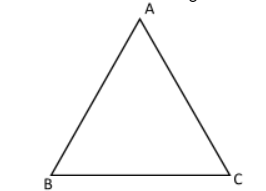What is Triangle Proportionality Theorem?
The Triangle Proportionality Theorem states that if a line parallel to one side of a triangle intersects the other two sides of the triangle, then the line divides the two sides proportionally.
How to Prove the Triangle Proportionality Theorem?
Let us consider a triangle △ABC

A line DE parallel to the side BC intersects the sides AB and AC.

Thus, if DE // BC, prove that AD/DB = AE/EC
For the parallel lines DE and BC, the line AB is a transversal intersecting both lines.
The ∠ADE and ∠ABC are corresponding angles and thus congruent.
Similarly, for the parallel lines DE and BC, the line AC is a transversal intersecting both lines.
The ∠AED and ∠ACB are corresponding angles and thus congruent.
∠EAD is common to both △ABC and △ADE.
Therefore, △ABC is similar to △ADE.
Which means, AD/AB = AE/AC
AD/(AD + DB) = AE/(AE + EC)
AD (AE + EC) = AE (AD + DB)
AD(AE) + AD(EC) = AE(AD) + AE(DB)
AD(AE) + AD(EC) = AE(AD) + AE(DB)
AD(EC) = AE(DB)
AD/DB = AE/EC










